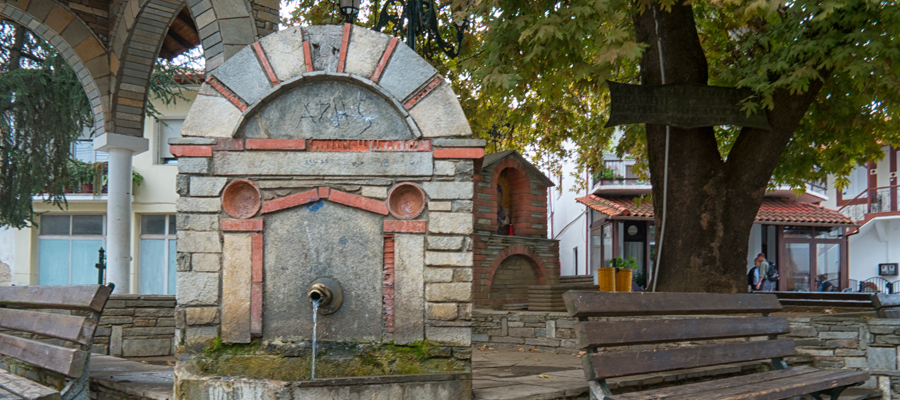Palaiochori
This beautiful village and important transportation hub is located between Arnaia and Neochori. The residential planning still preserves traditional features and the houses are spread around the square with the age old plane tree. Stores and cafes are also located there. Palaiochori is built at 550 meters high and has more than 1.500 residents. Its roots go back centuries and it is not randomly situated near the Neposi castle. Coins, pottery and shells have been occasionally found in the wider area, as well as ruins from fortifications and tombs. The exact date of the foundation of the village is not known. A plate indicating that the settlement existed 1.000 years ago was found in Neposi castle. In fact, according to some evidence, Palaiochori was one of the 32 cities of the Olynthian Federation, destroyed in 348 B.C. by Philip II. The famous “Kasteli” is also mentioned. It is said that it was the largest castle in Halkidiki and must have been destroyed for the first time in 540 B.C. by the Huns. A “large village” took its place after two centuries.
The temple of Great Archangels with the beautiful murals and the statue of Ecumenical Patriarch Joachim III the Magnificent located in the courtyard, are of special historic and religious importance. Also located there is the, according to tradition, miraculous picture of Archangel Michael (16th century, cretan-macedonian art) and the picture of Virgin Gorgoepikoou (the only exact copy of the one embedded in the wall of Dochiariou monastery in Mount Athos). Taking the road that leads to Megali Panagia, on your left, you will come across one of the most beautiful monastic guest quarters: this of Virgin Mary (Panagia) “Joy for the sad ones”, with the church of St. Athanasius the Athonite. The church celebrates on July 5.
Info
According to writer and researcher John Anapliotis, Alexis Zorbas of Nikos Kazantzakis lived in Palaiochori from 22 to 44 years old. It is worth mentioning that the tradition of weaving is still alive here thanks to the women of the village. The technique is transferred from generation to generation. The residents also try to preserve the local idiom with significant influences from the Ottoman era, with roots to ancient Greek and Latin language.






